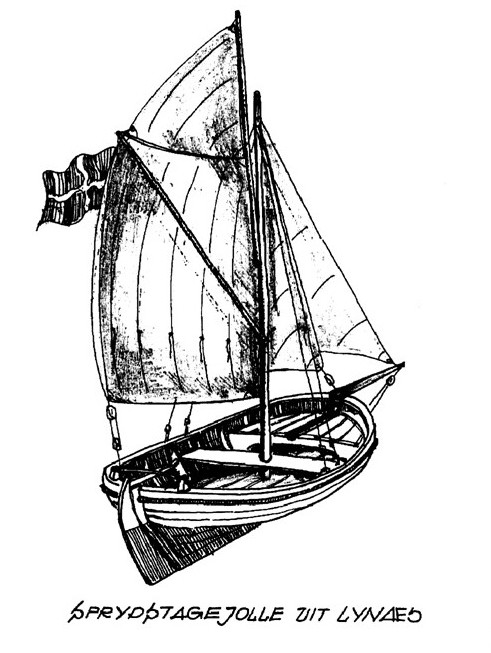History
 Photo: Midgetclub. Spitzgattertje 133, June 2010
Photo: Midgetclub. Spitzgattertje 133, June 2010
The history of these boats can be drawn back to 1820, when the Danish pilot Ole Jensen built an outstanding seaworthy dinghy with excellent sailing characteristics.
The main features at that time were the round stern and the broad width.
After a devastating hurricane in 1852, in which many fishermen lost their lives, Ole Jensen built a number of small fishing boats, similar to his Lynaes dinghy. In this way the dinghy formed basis for the larger and very seaworthy fishing vessels designed for outright fishing at sea.
Ole Jensen's extremely talented apprentice, Peter Madsen, continued the tradition and built several boats of this type for the resident fishermen .
His son Christian Madsen carried on this tradition. It is noteworthy that the boats were built without drawings or framelines, relying only on the craftsmans eye, skill and experience.
By 1860 approximately 700 to 800 boats of this type were built, but then the number dropped off rapidly, because the production was too expensive and also there were not enough boatbuilders with appropriate experience and skill.
In the 1960s, the production grew again, due to the fact, that now the boats could be build of GRP. At this time the advice and experience of Christian Madsen was very sought-after, because adjustments had to be made, due to differences in weight and strength of the new materials,

